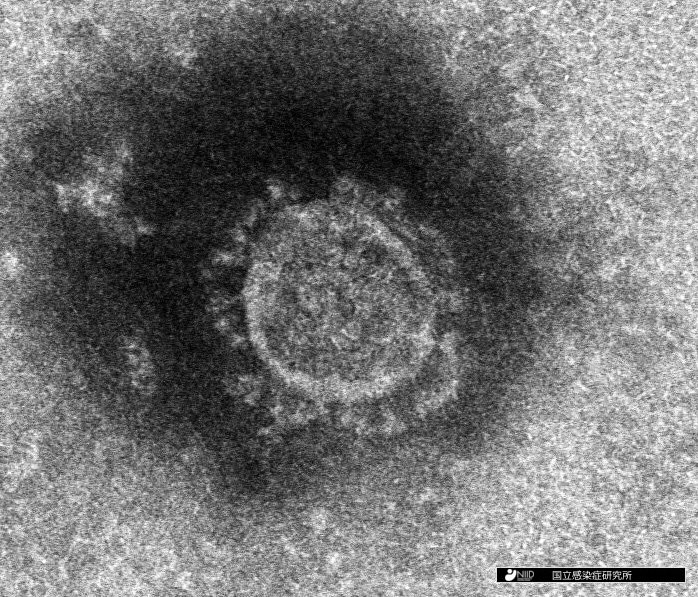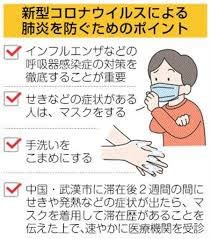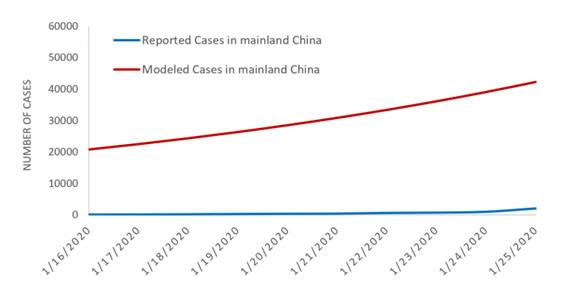
感染者数が2万人、死者数が400人を超え、新型肺炎の感染拡大が止まらない中、11人の感染者が確認されているアメリカ(米国時間2月3日時点)でもヒトヒト感染が確実に進んでいる。
米国では夫婦間でヒトヒト感染
2月2日(米国時間)、新型コロナウイルスによる2番目のヒトヒト感染が、カリフォルニア州サン・ベニート群で確認された。最近、武漢に旅行した男性とその妻が新型コロナウイルスに感染していることがわかったのだ。妻は武漢には行かなかったので、妻は武漢から戻ってきた夫からうつされたことになる。夫妻はともに57歳。入院してはいないが、自宅隔離している状況だ。
アメリカでの最初のヒトヒト感染は、先週、イリノイ州シカゴで発生したが、それも夫妻間で起きたものだった。イリノイ州在住の男性が、最近、武漢を訪問した妻から新型コロナウイルスをうつされ、2人とも入院した。
また、フィリピンでもパートナー間での感染が起きた。2月1日、フィリピンで中国国外で初めて新型肺炎による死者が出たが、亡くなった44歳の男性は、一緒に武漢を旅行した38歳の女性から感染。その女性はフィリピンで最初に感染が確認された人物だったという。ちなみに、この2人は、武漢から香港経由で、1月21日にフィリピンに入っている。

ほぼ確実にパンデミックになる
ヒトヒト感染が増え、中国国外での死者も出る中、アメリカの専門家が米紙ニューヨーク・タイムズで何とも悲観的な発言をしている。
感染症研究の世界的権威として知られる、アメリカ国立アレルギー・感染症研究所所長のアンソニー・フォーシ博士が、パンデミックという言葉に言及したのだ。
「コロナウイルスは、非常に、非常に伝染力がある。パンデミックになるのはほぼ確実だ。しかし、カタストロフィック(壊滅的)になるか? それはわからない」
ちなみに、パンデミックとは、インフルエンザのように、地球のほとんど全土に拡大する疾病のこと。WHO(世界保健機関)は疾病についてフェーズ1〜6の6つの警戒段階を設けているが、パンデミックは最も警戒しなければならないフェーズ6の段階に当たる。20世紀には、1968年の“香港インフルエンザ”、1957年の“アジアインフルエンザ”、1918年の“スペインインフルエンザ”と3回のパンデミックが起きた。2009年に流行した新型インフルエンザについては、WHOはパンデミック宣言を行ったものの実際の被害は小さかったという。
CDC(アメリカ疾病予防管理センター)の前ディレクター、トーマス・フリーデン博士も、封じ込めの難しさに言及。
「ウイルスはいよいよ封じ込められなくなりそうだ。だから、インフルエンザや他の微生物のように感染が拡大するだろう。しかし、どこまで拡大し、どれだけの人が亡くなるかはまだわからない」
両者の見解を合わせると、伝染力があるため、封じ込めが難しいほど感染が拡大し、パンデミックになるのはほぼ間違いないが、どの程度深刻な状況まで行くかはわからないということになる。
中国から到着する訪問者を入国拒否する国続々
先が読めない新型肺炎に対し、アメリカは「非常事態宣言」を出し、迅速に厳格な予防策をとった。米国民に中国全土への渡航禁止を勧告し、実質的に中国から到着した訪問者を入国禁止にする措置をとったのだ。具体的には、
1. 到着前14日間の間に中国に滞在した外国人の入国を拒否。
2. 中国本土の他の地域を訪ねた米国民は指定された11の空港でスクリーニングを受け、14日間自宅観察をする。
3. 湖北省を訪ねた米国民は、入国後、潜伏期間の14日間強制隔離する。
とした。
アメリカ以外でも、中国から到着する訪問者の入国を禁じる措置が次々取られ始めている。
フィリピンは中国国外で新型肺炎による初めての死者が出たことをうけ、香港やマカオを含めて、中国から来る訪問者の入国を禁止した。
ニュージーランドは2月3日から、中国から到着する旅行者の入国を拒否し、国に戻って来たニュージーランド国民を14日間自主隔離させる措置をとる。
インドネシアは到着前14日間の間に中国に滞在していた訪問者の入国を禁止すると発表した。
イラクは中国から到着するすべての外国人の入国を禁止すると発表。
シンガポールは中国人訪問者と到着前14日間の間に中国に滞在した外国人の入国を禁止している。
ベトナムは5月1日まで、中国、香港、マカオから来るフライトの乗り入れを禁止にした。
モンゴルは3月2日まで、中国との国境を閉鎖した。
韓国では、中国からの訪問者の入国禁止を求める嘆願書への署名が進み、署名者数が54万を超えた。
アジアの国々が次々と厳格な予防策へと移行する中、日本は「湖北省に日本到着前14日以内に滞在した外国人と、湖北省発行の中国旅券所持者の入国を、2月1日から当面禁止する」に踏み留まっている。
感染症研究の権威がパンデミックとまで言及した今、日本政府はもっと厳格な措置を講じるべきではないか。
https://news.yahoo.co.jp/byline/iizukamakiko/20200204-00161616/
「感染者数は何万も少なく見積もられている」前アメリカFDA長官 新型肺炎が世界に拡大したワケ
https://news.yahoo.co.jp/byline/iizukamakiko/20200130-00160958/
Modeling the Spread of 2019-nCoV
https://systems.jhu.edu/research/public-health/ncov-model/
https://getnews.jp/archives/2379312
https://headlines.yahoo.co.jp/hl?a=20200129-00000002-cnippou-kr
広がる新型コロナウイルスからわが身を守るには
https://headlines.yahoo.co.jp/hl?a=20200206-00010000-medical-sctch
今すぐできる新型コロナウイルス対策 通勤電車どうする? 帰宅時に必要なことは?
https://headlines.yahoo.co.jp/hl?a=20200203-00010000-telling-sctch
一目で分かる新型肺炎の猛威 死者565人、感染2万8000人超でもWHOはパンデミックと認めず
https://news.yahoo.co.jp/byline/kimuramasato/20200206-00162024/
新型肺炎、既に国内で散発流行も 学会が見解「正しく恐れて」
https://headlines.yahoo.co.jp/hl?a=20200206-00000203-kyodonews-soci
国立感染症研究所
https://www.niid.go.jp/niid/ja/diseases/ka/corona-virus/2019-ncov/9324-2019-ncov.html












